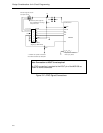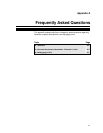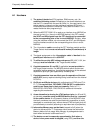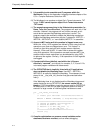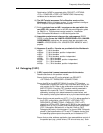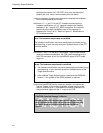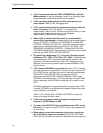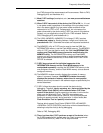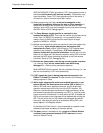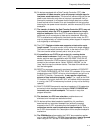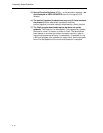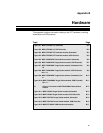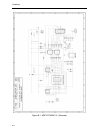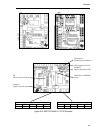
Frequently Asked Questions
A-8
2) C-SPY can download data into RAM, INFORMATION, and Flash
MAIN memories. A warning message is output if an attempt is made
to download data outside of the device memory spaces.
3) C-SPY can debug applications that utilize interrupts and low
power modes. Refer to FAQ, Debugging #24).
4) C-SPY cannot access the device registers and memory while the
device is running. C-SPY will display “-“ to indicate that a
register/memory field is invalid. The user must stop the device in order
to access device registers and memory. Any displayed
register/memory fields will then be updated.
5) When C-SPY is started, the Flash memory is erased and the
opened file is programmed in accordance with the download options
as set in PROJECT->OPTIONS->FET DEBUGGER->DOWNLOAD
CONTROL->DOWNLOAD CONTROL. This initial erase and program
operations can be disabled selecting PROJECT->OPTIONS-> FET
DEBUGGER->DOWNLOAD CONTROL ->DOWNLOAD CONTROL-
>SUPPRESS DOWNLOAD. Programming of the Flash can be initiated
manually with EMULATOR->INIT NEW DEVICE.
6) The parallel port designators (LPTx) have the following physical
addresses: LPT1: 378h, LPT2: 278h, LPT3: 3BCh. The configuration
of the parallel port (ECP, Compatible, Bidirectional, Normal) is not
significant; ECP seems to work well. Refer FAQ, Debugging #1) for
additional hints on solving communication problems between C-SPY
and the device.
7) C-SPY asserts RST/NMI to reset the device when C-SPY is started
and when the device is programmed. The device is also reset by the C-
SPY RESET button, and when the device is manually reprogrammed
(EMULATOR->INIT NEW DEVICE), and when the JTAG is
resynchronized (EMULATOR->RESYNCHRONIZE JTAG). When
RST/NMI is not asserted (low), C-SPY sets the logic driving RST/NMI
to high-impedance, and RST/NMI is pulled high via a resistor on the
PCB.
RST/NMI is asserted and negated after power is applied when C-SPY
is started. RST/NMI is then asserted and negated a second time after
device initialization is complete.
Within C-SPY, EMULATOR->”POWER ON” RESET will cycle the
power to the target to effect a reset.
8) C-SPY can debug a device whose program reconfigures the
function of the RST/NMI pin to NMI.
9) The level of the XOUT/TCLK pin is undefined when C-SPY resets
the device. The logic driving XOUT/TCLK is set to high-impedance at
all other times.
10) When making current measurements of the device, ensure that
the JTAG control signals are released (EMULATOR->RELEASE
JTAG ON GO), otherwise the device will be powered by the signals on



